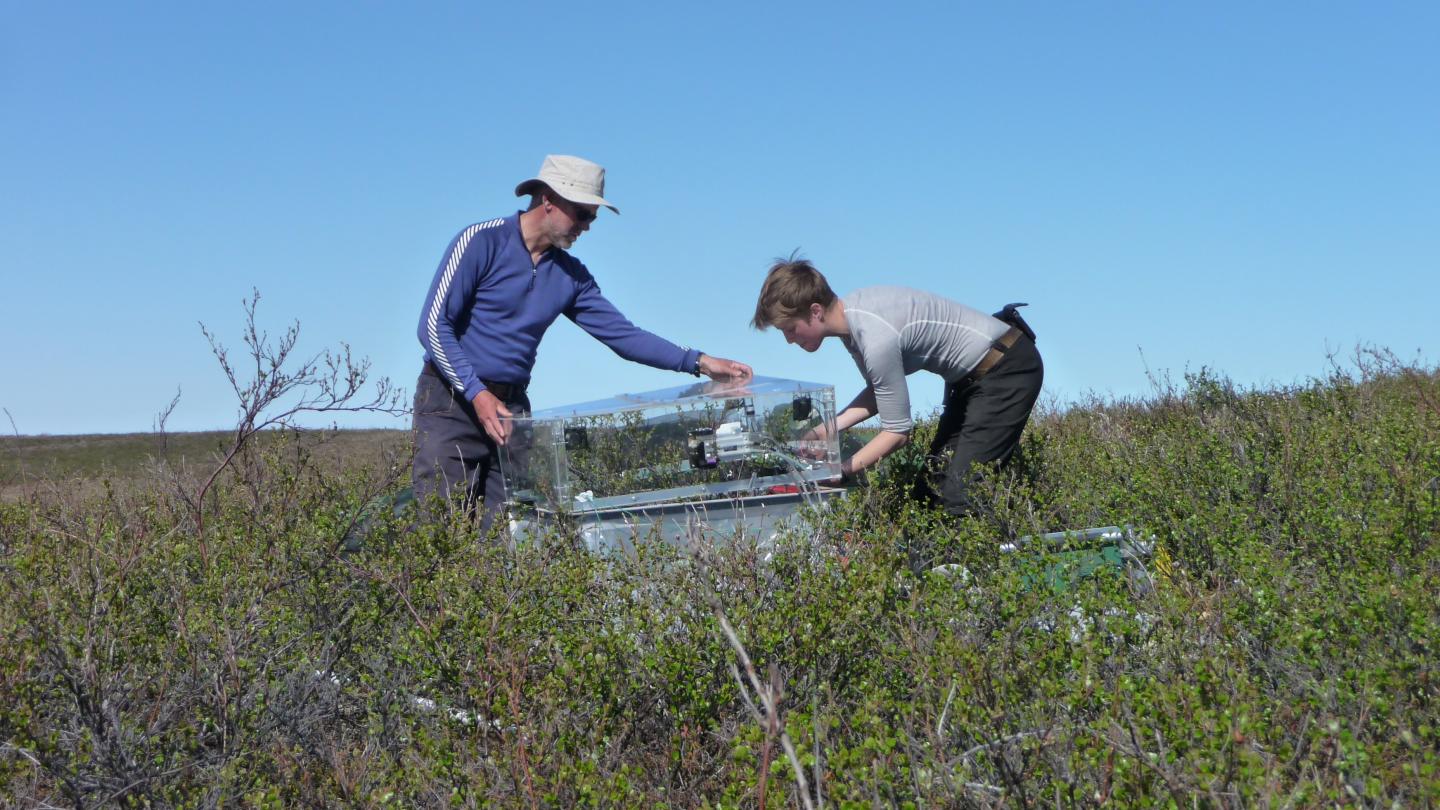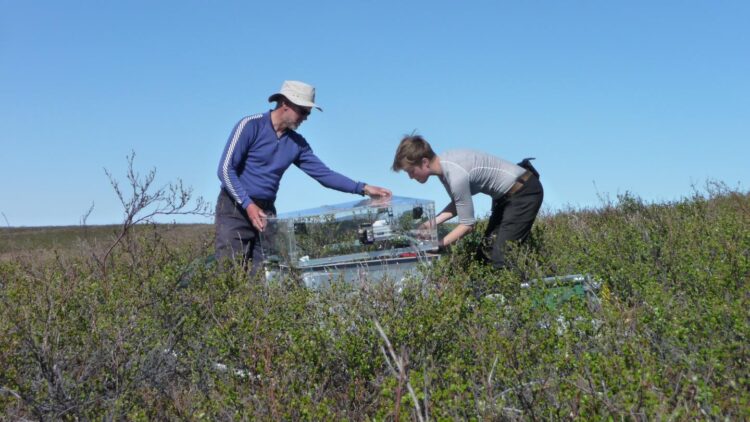
Credit: University of Stirling
The environmental benefits of taller, shrubbier tundra plants in the Arctic may be overstated, according to new research involving the University of Stirling.
Current ecosystem and climate models suggest that, as the Arctic warms, tundra ecosystems are becoming more productive, with greater photosynthesis resulting in more carbon being removed, or sequestered, from the atmosphere.
However, most models do not consider the transfer and fate of this carbon below-ground, and how this can interact with soil carbon through the activities of soil microorganisms. This is critically important because the vast majority of carbon in Arctic ecosystems is found in soil and ‘permafrost’ (permanently frozen soil or sediment) in the form of organic matter produced by the incomplete decay of dead plants, animals and soil organisms in cold conditions.
The new research considered the impact of a shrubbier Arctic on soil carbon stocks and the overall carbon sequestration potential of these ecosystems. Significantly, it found that some tall shrub communities stimulate recycling of carbon in soils, releasing it back into the atmosphere as carbon dioxide – meaning that more productive shrubs might not always result in greater carbon sequestration.
Professor Philip Wookey of the Faculty of Natural Sciences at the University of Stirling led the Natural Environment Research Council (NERC) funded research programme of which this study was a part. Stirling colleague Dr Jens-Arne Subke was also involved in this work.
Professor Wookey said: “While previous studies suggest that a warmer, greener Arctic may increase the rate that carbon dioxide is removed from the atmosphere, our research identified an acceleration in the rate of loss of carbon from soils, back into the atmosphere.
“This may more than offset carbon sequestration and would, unexpectedly, turn these ecosystems into a net source of carbon dioxide to the atmosphere. Significantly, current ecosystem and climate models do not account for this conundrum, which means we may be underestimating future climate feedbacks from Arctic ecosystems.”
The study was led by Dr Lorna Street, of the University of Edinburgh’s School of GeoSciences, and also involved scientists from the NERC Radiocarbon Facility in East Kilbride, and the Universities of Durham and Liverpool. Further support was received from the Aurora Research Institute, Wilfrid Laurier University, and the University of Montreal, all in Canada.
The fieldwork – looking at how carbon is cycling in plants and soils over the past 50 years – was conducted in 2013 and 2014 in the Mackenzie Uplands of Northwest Territories, Canada.
The team found evidence that birch shrubs in Arctic tundra are strongly linked to the release of old carbon – fixed by photosynthesis more than 50 years ago and stored in soil organic matter. However, this was not true of alder, another type of Arctic shrub.
Dr Street said: “We think this is because, in birch, the products of photosynthesis are transferred to the soil through fungal symbionts, which stimulate the decomposition of soil organic material as a means of releasing the nutrients, like nitrogen, that the birch shrubs require to grow.
“By contrast, in alder, photosynthesis products are mostly retained in plant tissues because alder often has the help of microorganisms in the roots, which are capable of ‘fixing’ nitrogen directly from the atmosphere.
“These findings indicate that, if – as evidence has suggested – shrub birch proliferates in tundra ecosystems over the next decades, this might directly stimulate the loss, through accelerated decomposition, of pre-existing soil carbon as carbon dioxide.”
Uncertainty surrounds the level of potential carbon release from high latitude permafrost systems – with predictions ranging between 0 and 200 gigatons. For context, 200 Gt represents approximately 20 years of current total global carbon emissions, due to human activity, to the atmosphere.
Dr Street added: “If our results apply across permafrost tundra regions, this suggests there is a previously unaccounted for process which could push the system towards the upper end of those predictions. This is hugely important as it means we may need to do more than currently expected, in terms of carbon dioxide emissions reductions, to meet our climate targets.”
###
The study, Plant carbon allocation drives turnover of old soil organic matter in permafrost tundra soils, is available now.
Media Contact
Greg Christison
[email protected]
Related Journal Article
http://dx.





